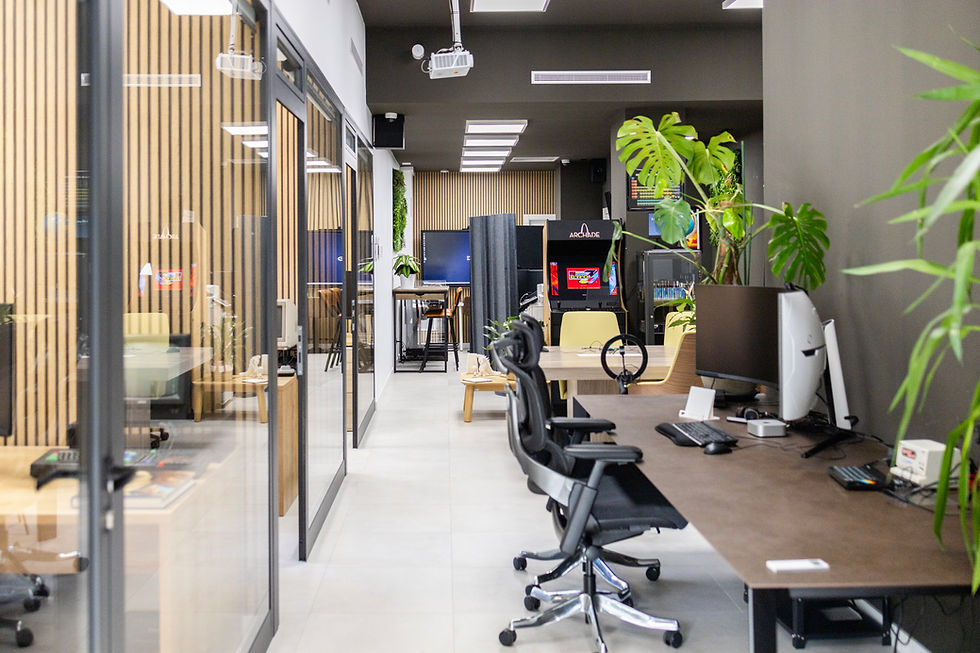Creating Stunning 3D Web Apps with React Three Fiber
- Brainlab Fira
- Sep 22
- 4 min read
Updated: Oct 3
Building immersive 3D web applications has never been more exciting. With the rise of powerful libraries and frameworks, creating interactive 3D experiences is now accessible to developers at all levels. One standout tool in this space is react three fiber, a React renderer for Three.js that simplifies the process of integrating 3D graphics into web apps. In this post, I’ll walk you through how to harness advanced 3D web tools to create stunning, performant, and scalable 3D web applications.
Why Advanced 3D Web Tools Matter
The web is evolving fast, and so are user expectations. Static websites no longer cut it when it comes to engagement. Interactive 3D content can captivate users, showcase products in new ways, and provide immersive storytelling. But building these experiences requires the right tools.
Advanced 3D web tools help by:
Simplifying complex 3D rendering: They abstract away low-level WebGL code.
Improving performance: Optimised rendering pipelines ensure smooth experiences.
Enhancing developer productivity: Intuitive APIs and React integration speed up development.
Enabling cross-platform compatibility: Works seamlessly on desktops, tablets, and mobiles.
For example, imagine an online furniture store where customers can rotate and customise a 3D model of a sofa before buying. This level of interaction boosts confidence and reduces returns. Advanced 3D tools make this possible without reinventing the wheel.

Getting Started with Advanced 3D Web Tools
To create your first 3D web app, you’ll want to pick tools that balance power and ease of use. Here’s a quick overview of what you need:
Three.js: The core JavaScript library for 3D graphics on the web. It handles rendering, lighting, materials, and more.
React Three Fiber: A React renderer for Three.js that lets you build 3D scenes declaratively using React components.
Drei: A helper library with ready-made components like cameras, controls, and shapes to speed up development.
React Spring: For smooth animations and transitions within your 3D scenes.
Once you have these set up, you can start building your scene by defining objects, lights, and cameras as React components. This approach feels natural if you’re already familiar with React, and it keeps your code clean and maintainable.
Here’s a simple example of a spinning cube using React Three Fiber:
```jsx
import { Canvas } from '@react-three/fiber'
import { useRef } from 'react'
function SpinningCube() {
const meshRef = useRef()
useFrame(() => {
meshRef.current.rotation.x += 0.01
meshRef.current.rotation.y += 0.01
})
return (
<mesh ref={meshRef}>
<boxGeometry args={[1, 1, 1]} />
<meshStandardMaterial color="royalblue" />
</mesh>
)
}
export default function App() {
return (
<Canvas>
<ambientLight />
<SpinningCube />
</Canvas>
)
}
```
This snippet creates a blue cube that continuously spins. It’s a great starting point to experiment with more complex shapes and interactions.

Can I use React Three Fiber with Next JS?
Absolutely! Next.js is a popular React framework for server-side rendering and static site generation. Combining it with React Three Fiber unlocks powerful possibilities for SEO-friendly, fast-loading 3D web apps.
Here are some tips to get started:
Dynamic imports: Since Three.js relies on WebGL, which only runs in the browser, use dynamic imports to load your 3D components client-side.
Avoid SSR for 3D components: Wrap your 3D canvas in a component that only renders on the client to prevent server-side rendering errors.
Optimise assets: Use compressed textures and models to reduce load times.
Leverage Next.js image optimisation: For 2D assets like textures or UI elements, Next.js can optimise images automatically.
Here’s a simple example of how to dynamically import a 3D scene in Next.js:
```jsx
import dynamic from 'next/dynamic'
const ThreeDScene = dynamic(() => import('../components/ThreeDScene'), { ssr: false })
export default function Home() {
return (
<div>
<h1>Welcome to My 3D Web App</h1>
<ThreeDScene />
</div>
)
}
```
This approach ensures your 3D content loads only in the browser, avoiding common pitfalls with server-side rendering.

Practical Tips for Building Stunning 3D Web Apps
Creating beautiful 3D web apps is part art, part science. Here are some actionable recommendations to help you succeed:
Start simple: Begin with basic shapes and gradually add complexity.
Use lighting effectively: Good lighting can make or break your scene. Experiment with ambient, directional, and point lights.
Optimise performance: Limit polygon counts, use texture compression, and leverage React’s memoization to avoid unnecessary re-renders.
Make it interactive: Add controls like orbit controls or clickable objects to engage users.
Test on multiple devices: Ensure your app runs smoothly on desktops, tablets, and mobiles.
Leverage community resources: Libraries like Drei and tutorials can save you time.
For example, if you’re building a product configurator, allow users to change colours or materials with buttons that update the 3D model in real-time. This interactivity creates a memorable user experience.
Why Brainlab Fira Supports Innovation with 3D Web Apps
At Brainlab Fira, we believe in pushing the boundaries of technology to revolutionise industries. Advanced 3D web tools empower businesses to create immersive experiences that stand out in a crowded market. Whether you’re a startup looking to showcase your product or a large company aiming to innovate, mastering these tools is a game-changer.
Our mission is to foster a vibrant community where diverse businesses and individuals can grow and innovate together. By embracing AI-powered deep tech and physics solutions alongside 3D web technologies, we’re building the future of digital interaction right here in L'Hospitalet de Llobregat.
If you’re ready to dive deeper into 3D web development, check out our online courses designed to equip you with the skills to create stunning 3D web apps using the latest tools and frameworks.
Creating 3D web apps is an exciting journey filled with endless possibilities. With the right tools and mindset, you can build experiences that captivate and inspire. So why wait? Start exploring advanced 3D web tools today and bring your ideas to life in three dimensions!




Comments